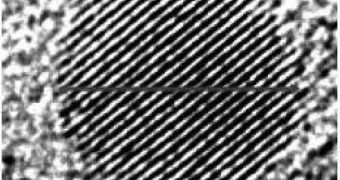Experts from the University of Edinburgh, in the UK, have recently announced that very small crystals may hold the key to making the computers of tomorrow able to hold up to 100 times more data than existing systems. The team has been involved in trying to produce salt crystals in gel, using advanced laser technology, in the hope of boosting storage capacities in desktop computers for a few years, the BBC News reports. The goal is to enable users to store a terabyte of data within the space of a sugar cube within the next years.
This would be sufficient memory to store in excess of 250,000 photos, or about one million electronic books, experts believe. The reason why creating such memories is so difficult is the fact that many scientists look at producing crystals from salt within gels as a “black art.” The process is notoriously difficult to control and, if one variable remains unaccounted for, then the end-result does not fit the specifications and demands. There are also considerable difficulties involved with triggering and regulating a critical mass of molecules at the same place and time, the UK investigators mention.
In order to form a temporary crystal, the UE team used not one, but two low-energy beams of laser, which provided the exact amount of power needed to create the crystalline structure. According to UE School of Chemistry Professor Dr. Andy Alexander, the leader of the research team, the new technology could be used in the near future to give a boost to the traditional mediums of data storage, such as CDs and DVDs. The tiny crystals would essentially act like a storage point inside next-generation, three-dimensional optical data-storage systems.
Average disks only use two dimensions to store data, whereas the new mediums will use three. For this type of setup, crystals are an absolute requirement, the UE team adds. “This research builds on a discovery that was made by accident many years ago, when it was found that light can be used to trigger crystal formation. We have refined this technique and now we can create crystals on demand. There is much work to be done before these crystals can be used in practical applications such as optical storage, but we believe they have significant potential,” Alexander concludes.

 14 DAY TRIAL //
14 DAY TRIAL //